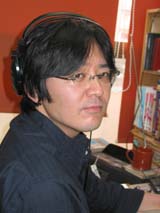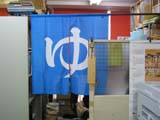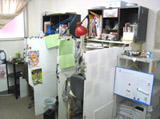Studio 2 Part 01: Kazuchika Kise and the birth of Studio 2
Kazuchika Kise, who was a key animator at an animation studio in Osaka, met Mitsuhisa Ishikawa, at the time a production staff member at Tatsunoko Production, for the first time when they both worked in the production of the TV anime Future Police Urashiman (1983). Later, Kise made his debut as animation supervisor for another TV series, Red Photon Zillion (1987), produced at Tatsunoko Production Branch, which later became I.G. This led to his joining the production, as an animation supervisor, of the feature film Patlabor: The Movie, released in 1989. "No one thought Patlabor would be a success, so I was planning to return to Osaka after that production." Nevertheless, to everyone's surprise, it turned out to the contrary and Kise was to stay at I.G. Gradually, the staff grew in number, and they needed more space, so they decided to divide the studio into two. This was the beginning of the Studio 2. "We worked on separate projects ranging in various length of time. Takayuki Goto led Studio 1. And we at Studio 2 did mostly theatrical features. That's how it was split up," says Kise, looking back at the time when Studio 2 was founded.
"My everyday life was sort of screwed up at the time. And Ishikawa said, 'I am going to give you an allowance, so join us as one of the founding board members of our new company, because we need four people to make up the board.' It might be that he was thinking about my future. But when I got my new business card as a board member, it did actually say, 'To be supervised by the board' on the back of the card!" jokes Kise.
His easy-going manner might be the reason for what distinguishes Studio 2. Even within I.G, which has become more established in terms of company organization, Studio 2 still keeps the essence of a typical free and open anime studio. People most often attribute this to the uniqueness of the staff in Studio 2 as compared to Studio 1. When it comes to hiring new staff, Kise says, "I take him/her out and have a drink together to see whether we've got an interesting kid."
"Basically, my method is to let them do whatever they want to do, so we don't necessary work together. Each one of us has to do the selling to get one's own work. I don't look after them, but I like watching people, that's all," says Kise. No one will be controlled, so one has to manage his/her own time and take responsibility. In Studio 2, people may have the freedom, but also need to take responsibility at the same time. Kise said he no longer trained new staff. The younger staff now takes care of that.
"I used to instruct people before, but I am not good at teaching. I would show them the sample answer and say, 'This is the way to do it,' but I can't really give the reason for it. It might be because I draw as my intuition tells me, not reason. Those people who left I.G to explore other opportunities sometimes tell me, 'Now, after three years, I think I understand what you meant.' It is really hard to teach how to draw. Now when I yell, 'You're fired! Get out!' my staff would reply, 'I see, then shall I take your desk to the roof top for you?' No one takes me seriously," (lol) says Kise, as he cheerfully talks about conversations among his staff at Studio 2. His cheerfulness seems to represent the spirit of Studio 2.

Kazuchika Kise






 terms of use
terms of use